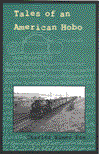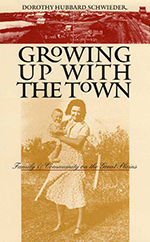Of Cabbages and Kings County
Winner of the 1999 Theodore Saloutos Memorial Prize for the best book published in American agricultural history
“Along with the thoughtful approach to the larger issues of land use, Of Cabbages and Kings County works wonderfully as a text brimming with new insights about Brooklyn's development in the 19th century.”—New York Times Book Review
“This book is based on superb research. It treats a heretofore unexplored subject in American agricultural history and makes an important contribution to American, agricultural, and New York history.”—R. Douglas Hurt, Center for Agricultural History and Rural Studies, Iowa State University
“This is an outstanding book. It provides revealing detail on how urbanization overtook a rich truck-farming area in Kings County, New York. It is a local study that has national significance. This is probably the best study in existence of the interaction between urbanization and farming.”—Gilbert C. Fite, Richard B. Russell Professor Emeritus, University of Georgia
“A fascinating counterpoint to the prevailing view of the development of Brooklyn as a simple story of increasing urbanization. By focusing on the corollary of this view—the story of a steady decline in agricultural production—Marc Linder and Larry Zacharias uncover a rich lode of information unavailable in the standard histories. While a particularly valuable chapter on labor illuminates the nature and extent of slaveholding on western Long Island, the authors' solid research sheds new light on virtually every aspect of the borough's history. A corrective to the tides of nostalgia that overwhelm many writers on Brooklyn, Of Cabbages and Kings County sets a new standard in the region's historiography.”—Joy Holland, librarian, Brooklyn Collection, Brooklyn Public Library
No one today thinks of Brooklyn, New York, as an agricultural center. Yet Kings County enjoyed over two centuries of farming prosperity. Even as late as 1880 it was one of the nation's leading vegetable producers, second only to neighboring Queens County.
In Of Cabbages and Kings County, Marc Linder and Lawrence Zacharias reconstruct the history of a lost agricultural community. Their study focuses on rural Kings County, the site of Brooklyn's tremendous expansion during the latter part of the nineteenth century. In particular, they question whether sprawl was a necessary condition of American industrialization: could the agricultural base that preceded and surrounded the city have survived the onrush of residential real estate speculation with a bit of foresight and public policies that the politically outnumbered farmers could not have secured on their own?
The first part of the book reviews the county's Dutch American agricultural tradition, in particular its conversion after 1850 from extensive farming (e.g., wheat, corn) to intensive farming of market garden crops. The authors examine the growing competition between local farmers and their southern counterparts for a share of the huge New York City market, comparing farming conditions and factors such as labor and transportation.
In the second part of the book, the authors turn their attention to the forces that eventually destroyed Kings County's farming—ranging from the political and ideological pressures to modernize the city's rural surroundings to unplanned, market-driven attempts to facilitate transportation for more affluent city dwellers to recreational outlets on Coney Island and, once transportation was at hand, to replace farms with residential housing for the city's congested population.
Drawing on a vast range of archival sources, the authors refocus the history of Brooklyn to uncover what was lost with the expansion of the city. For today, as urban planners, ecologists, and agricultural developers reevaluate urban sprawl and the need for greenbelts or agricultural-urban balance, the lost opportunities of the past loom larger.





